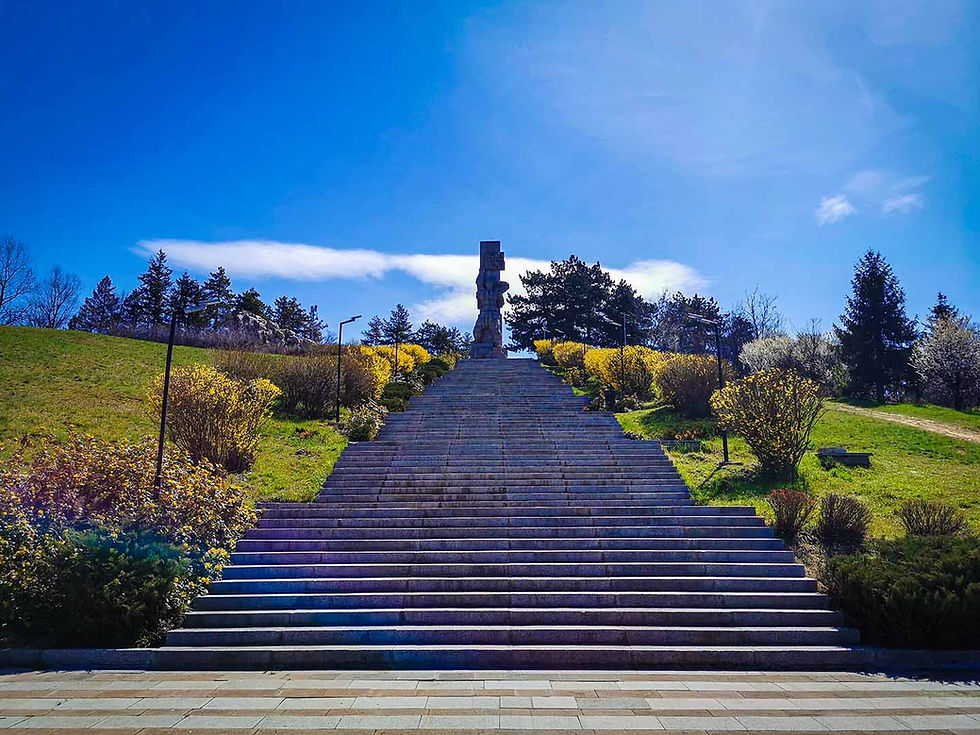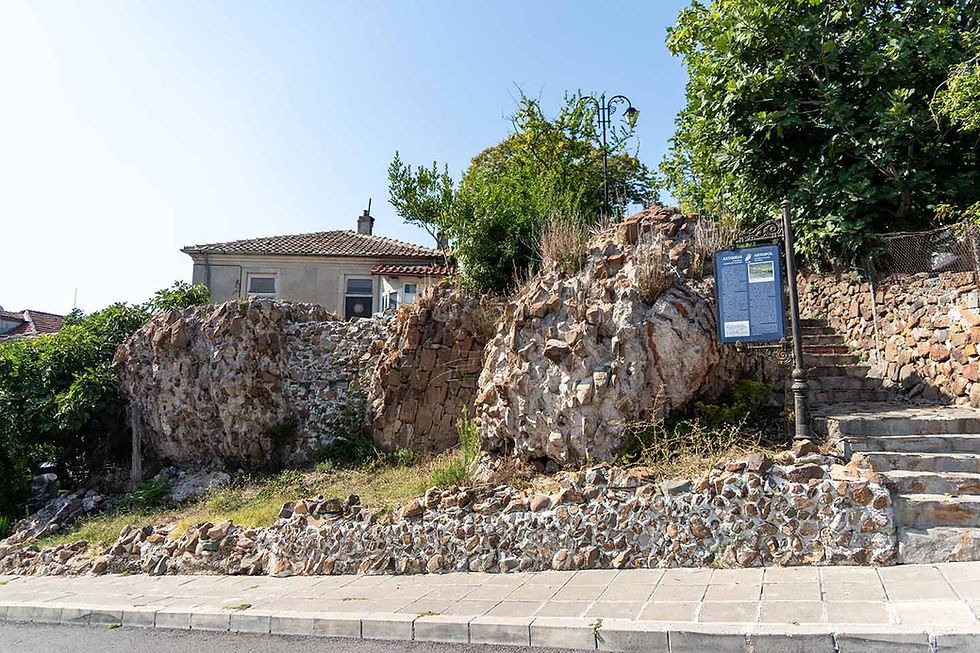The bloody letter
- Stefan Ivanov

- Apr 7, 2023
- 5 min read
Updated: Jan 20
April 19, summer 1876
At first, the Ottomans underestimated the scale of the conspiracy, which is why only the Curser Darin Nejib Aga was sent to Koprivshtitsa with several orders to arrest the rebels.
Early in the morning of April 20, the guards began the arrests.
Initially they arrested Georgi Tusunov. They searched for Braiko Enev and Petko Boyadzhiev, but they are absconding. Among the people Nejib aga had to arrest was Kableshkov, but his mother deceived the curserdar that he was not at home, although Todor was then lying sick in his father's house.
Faced with the defeat of the uprising even before it began, Kableshkov, despite his illness, decided to declare it prematurely. By his order, the bells in the city's churches rang, announcing the beginning of the rebellion, which remained in Bulgarian history as the April Uprising.
April 20, summer 1876, about 10 in the morning
Two squads were quickly formed and sent to surround the inn and the lodges within it.
The group, led by Georgi Tihanek, happened to meet Kara Husein Hajduk on the road and Tihanek shot him dead.

Kara Huseyin Hajduk was the first Ottoman killed in the uprising.
Under the leadership of Kableshkov, the inn was surrounded, but after a short siege, Nejib aga managed to escape with a large part of his men, but in the escape several zaptias were killed, including the mudyurin, and the aga lost his saber. It was then that Kableshkov wrote the famous bloody letter, which reads:
Brothers!
Yesterday, Nedzheba Aga arrived in the village from Plovdiv, who wanted to imprison several people with me. When I was informed of your decision, which was made in the Oborishte Assembly, I called several brave men and after we armed ourselves, we headed for the inn, which we attacked and killed the headman, with several prisoners...
Now, as I write this letter to you, the flag is flying in front of the inn, the guns are thundering, accompanied by the echo of the church bells, and the brave men are kissing each other in the streets!...
If you, brothers, were true patriots and apostles of freedom, then follow our example in Panagyurishte as well...
Koprivshtitsa, April 20, 1876
T. Kableshkov.
I was an eyewitness when everything mentioned in Todora's letter happened.
I am leaving for Klisura to do the same.
N. Karadzhov
At the end of the letter, Kableshkov drew a Christian cross with the blood of the mudyurin.
The letter was carried by 19-year-old Georgi Salchev, who traveled the 5-hour journey from Koprivshtitsa to Panagyurishte in just two hours.
Just before Panagyurishte, the horse of the bearer of the bloody letter died from the strain.
Another bloody letter was sent by Nikola Karadjov to Klisura.
Staro Novo selo and Strelcha are also known.
The courier Todor Moskov went to Vratsa to inform the committee and its leader - Stoyan Zaimov, but was captured in the Turkish village of Ladzhene and taken to Sofia.
Already in the afternoon of the same day (April 20), Georgi Benkovski, who at that time was in the Tuteva house in Panagyurishte, in accordance with the decision from Oborishte to avoid failure, prematurely announced the beginning of the Bulgarian uprising. This haste surprised the committees for ten days and negatively affected the entire revolutionary action. However, it was imposed by the circumstances themselves. Betrayal threatened with failure the carefully built organization, as well as the psychological preparation of the people for desperate and decisive actions.
The outbreak of the uprising in the IV district led to mass arrests of committee workers in the other districts, the lightning mobilization of irregular Ottoman units (bashibozuk) and the deployment of military units in all major Bulgarian cities.
Power in Koprivshtitsa was assumed by a military council, whose chairman is Kableshkov, and secretary - Nikola Belovezhdov. The pharmacy of Dr. Spas Abrashev was designated as the headquarters of the insurgents.
All roads and paths around Koprivshtitsa are blocked by insurgent units.
The rebels had a brief clash in the village of Sinjirlii (today "Verigovo" - a district of the city of Hisarya), where 13 Turks were killed, and the women and children were dragged to Koprivshtitsa. The villages emptied of the peasants were set on fire by order of Kableshkov, so that they would not be used by the Turkish troops as hideouts.
Meanwhile, in Karlovo, Tosun Bey is known for the uprising, and by his order, the sanjaksherifa - the sacred flag of the Muslims - was nailed to the gates of the inn, and around it for a week the Bashibozuk irregular army gathered from Plovdiv, Kazanlak and Karlovo.
How to get to Koprivshtitsa?
The town of Koprivshtitsa is located on the border of Sofia and Plovdiv regions.
It is located in southern Bulgaria near the Sub-Balkan road*.
*Republican road I-6, better known as the Sub-Balkan road, is a first-class road from the Republic road network of Bulgaria with a direction from west to east, crossing the territory of nine districts: Kyustendilska, Pernishka, Sofia region, Sofiaska, Plovdivska, Starozagorska, Sliven, Yambol and Burgas.
Its total length is 508.5 km, which makes it the longest national road in Bulgaria.
Koprivshtitsa stands at:
103 kilometers (about 1 hour and 30 minutes by car) from the capital
88 kilometers (about 1 hour and 40 minutes by car) from the city of Plovdiv
446 kilometers (about 5 hours and 30 minutes by car) from the city of Varna
321 kilometers (about 3 hours and 30 minutes by car) from the city of Burgas
How do you get to the Stone Bridge of the First Rifle (Kalychev Bridge) in the city of Koprivshtitsa?
The bridge is located at the intersection of "Parva Pushka", "Dimcho Debelyanov", "Nikola Belovezhdov", "Tumangelova Cheta" and "Rayna Katsarova" streets.
Directly next to the bridge, a bas-relief was erected in memory of the announcement of the April Uprising, made by architect Anastas Dudulov in 1928. The names of the participants in Georgi Tihanek's detachment are carved on the bas-relief, as well as a text celebrating the events of 1876.
Dear friends, following are links to all my April Epic posts
Oborishte historical area
April 15 - 17, summer 1876 - first Bulgarian National Assembly

Georgi Benkovski

Todor Kableshkov

The Tuteva House in Panagyurishte and announcement of the uprising

Birthplace of Raina Knyaginya

Church "St. Dimitar" in "Verigovo"



Church "St. Archangel Michael" - the last refuge in Peruštitsa






Comments